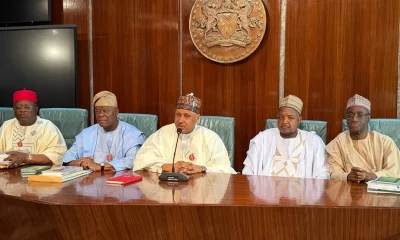The naira continued its appreciation streak on the newly launched Enhanced Foreign Exchange Market System (EFEMS), closing at N1,567/$1 on Thursday, December 5, 2024.
This marks a three-day consecutive gain since the Central Bank of Nigeria (CBN) transitioned to EFEMS, a move aimed at consolidating Nigeria’s forex market and enhancing transparency.
Thursday’s closing rate represents a N41 gain from Wednesday’s N1,608/$1, and it is the best official exchange rate since October 8, 2024, when the naira closed at N1,561.7/$1 under the now-defunct NAFEM system.
Intra-day trading saw highs and lows of N1,610 and N1,565 per dollar, respectively, with a weighted average rate of N1,587.
In the parallel market, often used for unofficial dollar trades, rates hovered around N1,640/$1, while investment platforms like Bamboo and Trove quoted N1,653/$1 and N1,654/$1, reflecting a narrowing disparity of under N60 or roughly 4%.
Adding to the day’s financial buzz, Bitcoin briefly surged to $103,000 before stabilizing around $99,200, underscoring volatile global financial markets.
Experts credit the naira’s recent gains to the EFEMS platform, introduced to unify Nigeria’s fragmented forex market, which previously operated through multiple windows, including the Investors & Exporters (I&E) and SME windows.
EFEMS now centralizes forex transactions, offering real-time price discovery and publishing daily rates to enhance transparency.
READ ALSO: Naira appreciates marginally at official market amid economic pressures
“The naira’s appreciation signals a promising start for EFEMS,” said financial analyst Tunde Olaniyan. “It reflects the market’s confidence in the CBN’s commitment to transparency and its ability to stabilize the naira in the medium term.”
CBN’s revised forex guidelines, issued on November 29, 2024, are integral to this transition.
They mandate pricing all forex transactions through EFEMS and require stringent compliance measures. Market participants, including banks and licensed brokers, must align with the platform’s standardized protocols to ensure uniformity and accountability.
“The consolidation of multiple windows into a single system eliminates inefficiencies and opens the door for improved liquidity,” explained economist Dr. Aisha Bello.
“However, sustained gains will depend on consistent supply, regulatory clarity, and addressing external shocks, such as oil price volatility.”
The narrowing gap between official and parallel market rates—long a marker of forex market inefficiency—suggests a shift toward greater equilibrium.
READ ALSO: Naira slumps to ₦2,188 against Pound Sterling amid mixed economic signals
Airlines, manufacturers, and importers have welcomed this development, which they say reduces operational uncertainties tied to forex volatility.
While EFEMS shows promise, skeptics caution against premature optimism. “The real test will come in maintaining consistent forex supply to meet demand without triggering inflationary pressures,” warned financial strategist Nkechi Adetayo.
With its third consecutive day of gains, the naira’s rally has bolstered the credibility of EFEMS and provided a much-needed boost to market confidence.
However, long-term stability will depend on how the CBN manages liquidity and external economic pressures.

 Business6 days ago
Business6 days ago
 Business7 days ago
Business7 days ago
 Latest2 days ago
Latest2 days ago
 Business7 days ago
Business7 days ago
 Business7 days ago
Business7 days ago
 Business7 days ago
Business7 days ago
 Politics7 days ago
Politics7 days ago
 Latest3 days ago
Latest3 days ago

